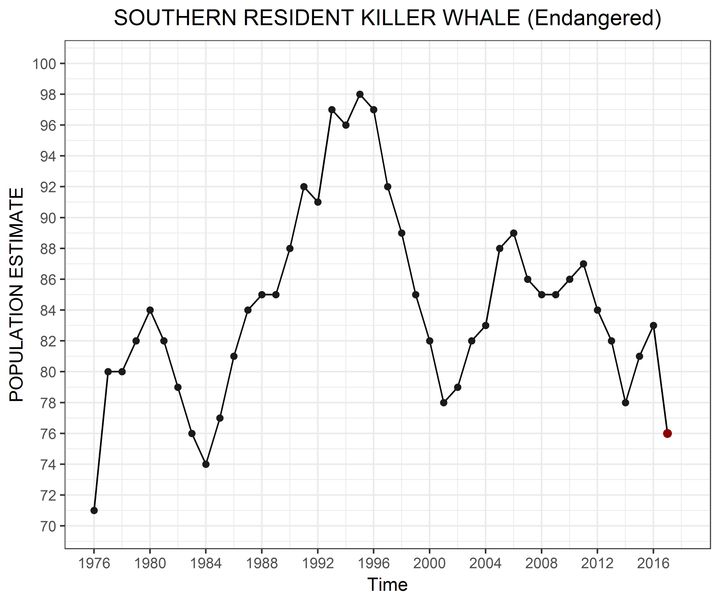
Southern Resident killer whale mother and her calf swimming.
There’s bad news from the Pacific Northwest, where a young killer whale — a calf from the endangered Southern Resident population, last seen emaciated and in poor condition— has died. This means there are now only 76 of these whales left, and they’re slipping toward extinction.
The Southern Resident killer whales are the iconic black-and-white orcas that have become a symbol of the Salish Sea, a network of coastal waterways in British Columbia and Washington state.
I’ll never forget the first time I saw a pod surfacing in the distance while sailing in the San Juan Islands, sleek and playful. They’re social animals that live in communities, share in caring for their young, and have complex systems of communication — they’re majestic, intelligent and beautiful. And in a deep crisis.
In the past couple of years, the killer whale population has dramatically declined. With the death of this young calf the population has dipped to the lowest level in three decades. Southern Resident killer whales were protected under Endangered Species Act in 2005. Historically, they were captured for public displays and performances. Now the threats include lack of prey, noise pollution and toxic contamination.
Time is of the essence in preventing the extinction of Southern Resident orcas. Even though solutions may be complicated and controversial, we can’t let these animals go extinct on our watch. We need bold and strategic actions now to save them.
Long overdue steps by the federal government could protect thousands of acres of habitat for Southern Resident killer whales. A couple of years ago, the feds promised to expand critical habitat protections to include winter foraging areas off the Pacific Coast. But they have yet to propose a rule.
Restoring salmon runs will save Southern Residents that are starving to death. Chinook salmon, their favorite food, are also struggling to survive faced with habitat destruction and climate change. On both sides of the U.S.-Canada border, salmon spawning rivers are degraded and blocked by dams and diversions.
Poorly managed fisheries also contribute to the continued decline of the Pacific Northwest’s salmon. Moreover, the lack of food contributes to the loss of nearly 70 percent of whale pregnancies; starving moms rely on fat reserves that release toxins from accumulated pesticides and chemicals.
Quieting the Salish Sea by slowing ships and prohibiting military sonar will give killer whales a break. Noise pollution disturbs them and disrupts their communication, eating and reproduction. Because orcas depend on echolocation to find their prey, a noisy ocean interferes with their ability to find salmon.
We don’t have much time to save the Southern Resident killer whales. The death of this calf should sound an alarm for the rapid action this crisis deserves.

Population estimate of Southern Resident killer whales.